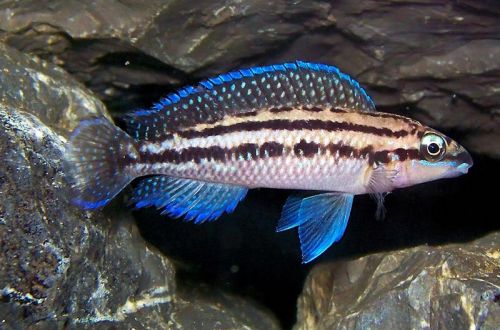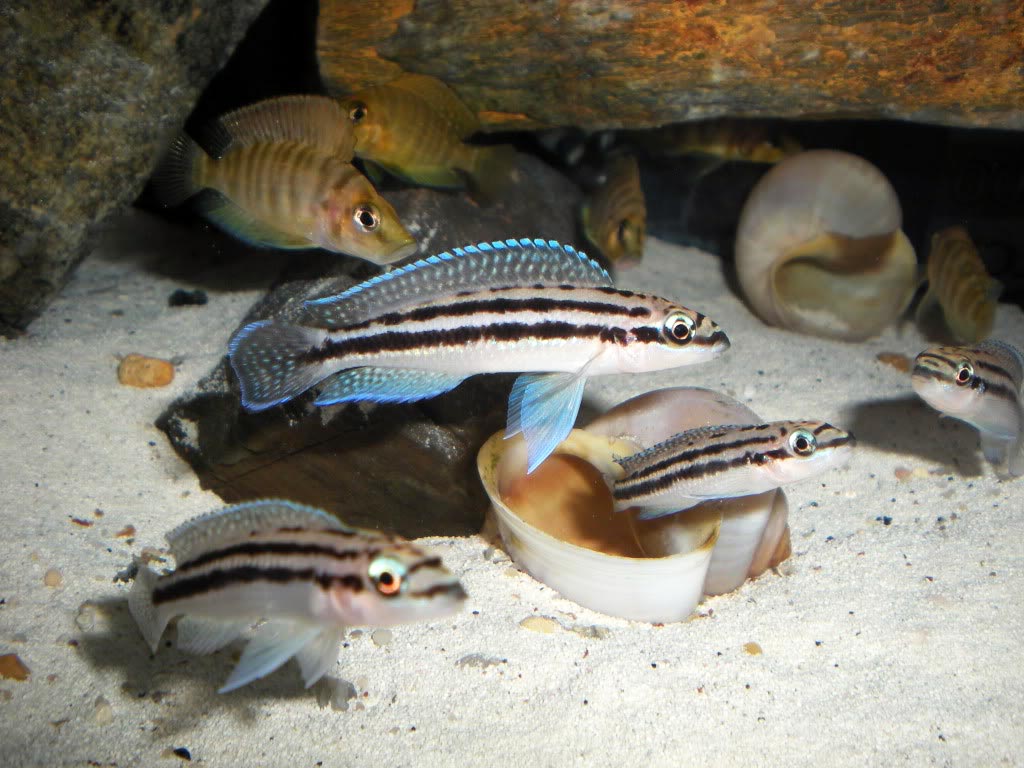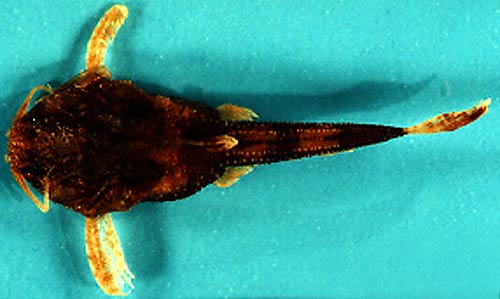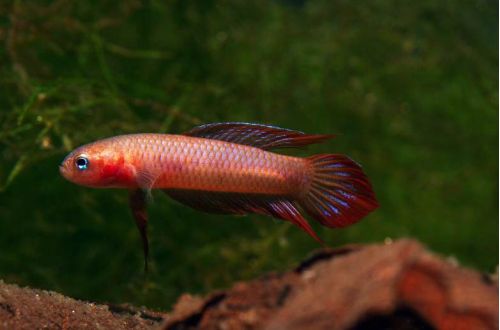
Julidochromis Dickfeld
Dickfeld’s Julidochromis, scientific name Julidochromis dickfeldi, belongs to the Cichlidae family. The fish forms a permanent pair and is jealous of its relatives. However, it can get along quite peacefully with other species. Easy to keep and breed, provided the right water conditions and diet are provided.

Contents
Habitat
Endemic to Lake Tanganyika in Africa, located mainly on the border between Tanzania and the Democratic Republic of the Congo. It lives in shallow water along the rocky coastline in the southwestern part of the lake, belonging to the territory of Zambia.
Brief information:
- The volume of the aquarium – from 70 liters.
- Temperature – 23-27°C
- Value pH — 8.0–9.2
- Water hardness – medium to high hardness (10-25 dGH)
- Substrate type – sandy
- Lighting – moderate
- Brackish water – no
- Water movement – weak, moderate
- The size of the fish is about 8 cm.
- Nutrition – high-protein feed with herbal supplements
- Temperament – conditionally peaceful in relation to other species
- Keeping in a male/female pair
Description

Adult individuals reach a length of about 8 cm. Sexual dimorphism is weakly expressed, it is rather problematic to distinguish a male from a female. The fish has an elongated body and a long dorsal fin stretching from head to tail. The coloration is light with a bluish tint and dark horizontal stripes. The fins and tail are blue.
Food
The diet should include protein foods with the addition of vegetable tops. For example, you can serve live or frozen food (brine shrimp, bloodworms, etc.) along with spirulina flakes or nori pieces. Dry food should be used sparingly.
Maintenance and care, arrangement of the aquarium
The optimal size of the aquarium for one pair of fish starts from 70 liters. The decor is simple. It is enough to use a sandy substrate, piles of stones and rocks. This is quite consistent with the natural habitat of Julidochromis Dikfeld.
Successful keeping is only possible if the following conditions are met: high water quality with suitable pH and dGH and sufficient levels of dissolved oxygen. To achieve these conditions, at a minimum, you will need to install a productive filtration and aeration system, as well as perform regular maintenance of the aquarium. The latter consists in the removal of organic waste (food leftovers, excrement) and the weekly renewal of part of the water (15–20% of the volume) with fresh water.
Behavior and Compatibility
Refers to territorial species. In a small aquarium, Dickfeld’s Julidochromis will compete with relatives for a place at the bottom of the aquarium. Sometimes skirmishes can be fierce, so you should limit yourself to one pair of fish – male / female. Young fish can live in a group. It is worth noting that this species forms a permanent pair, which persists throughout their life.
It calmly relates to representatives of other species of comparable size that live in the middle or upper layers of the water.
Breeding / breeding
Easy to breed species, if you can get a formed pair. A male and a female raised separately will never produce offspring. Moreover, their combination will lead to sad consequences. The male will perceive an unfamiliar female as a rival and may kill her.
In the presence of a suitable pair of fish and favorable conditions, the appearance of offspring will become regular. Determining the start of spawning is not difficult. The main sign will be the disappearance of the female. During this period, she lays her eggs in the cave and remains to guard them. The male takes a place near the entrance and guards the nearest territory around.
The incubation period lasts only 2-3 days. Parents continue to protect the fry until they grow to 2 cm or more in length. In the future, they should be transplanted otherwise they will be eaten.
Fish diseases
The main cause of most diseases of cichlids from Lake Tanganyika is unsuitable housing conditions and poor quality food, which often leads to such a disease as African bloat. If the first symptoms are detected, you should check the water parameters and the presence of high concentrations of hazardous substances (ammonia, nitrites, nitrates, etc.), if necessary, bring all indicators back to normal and only then proceed with treatment. Read more about symptoms and treatments in the Aquarium Fish Diseases section.





